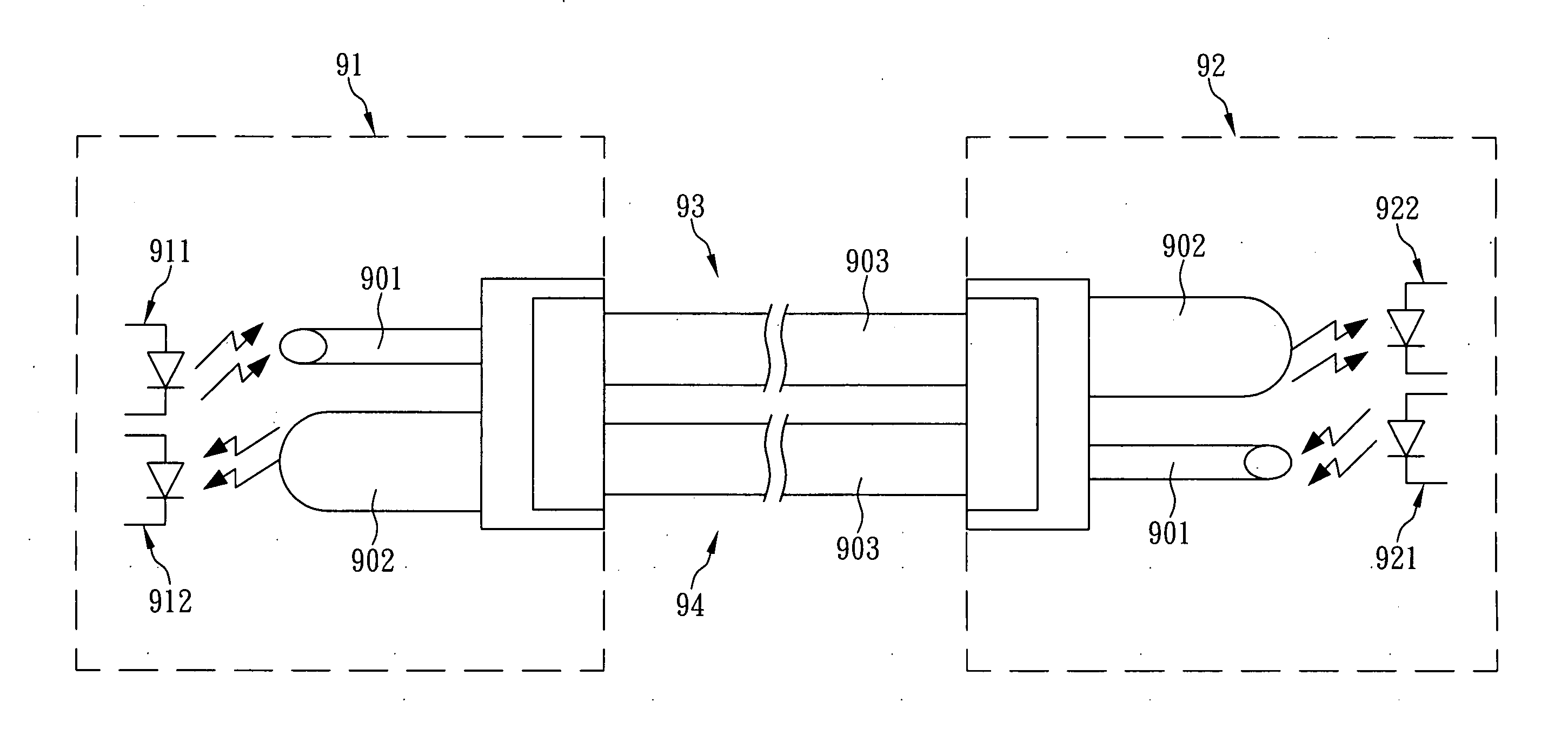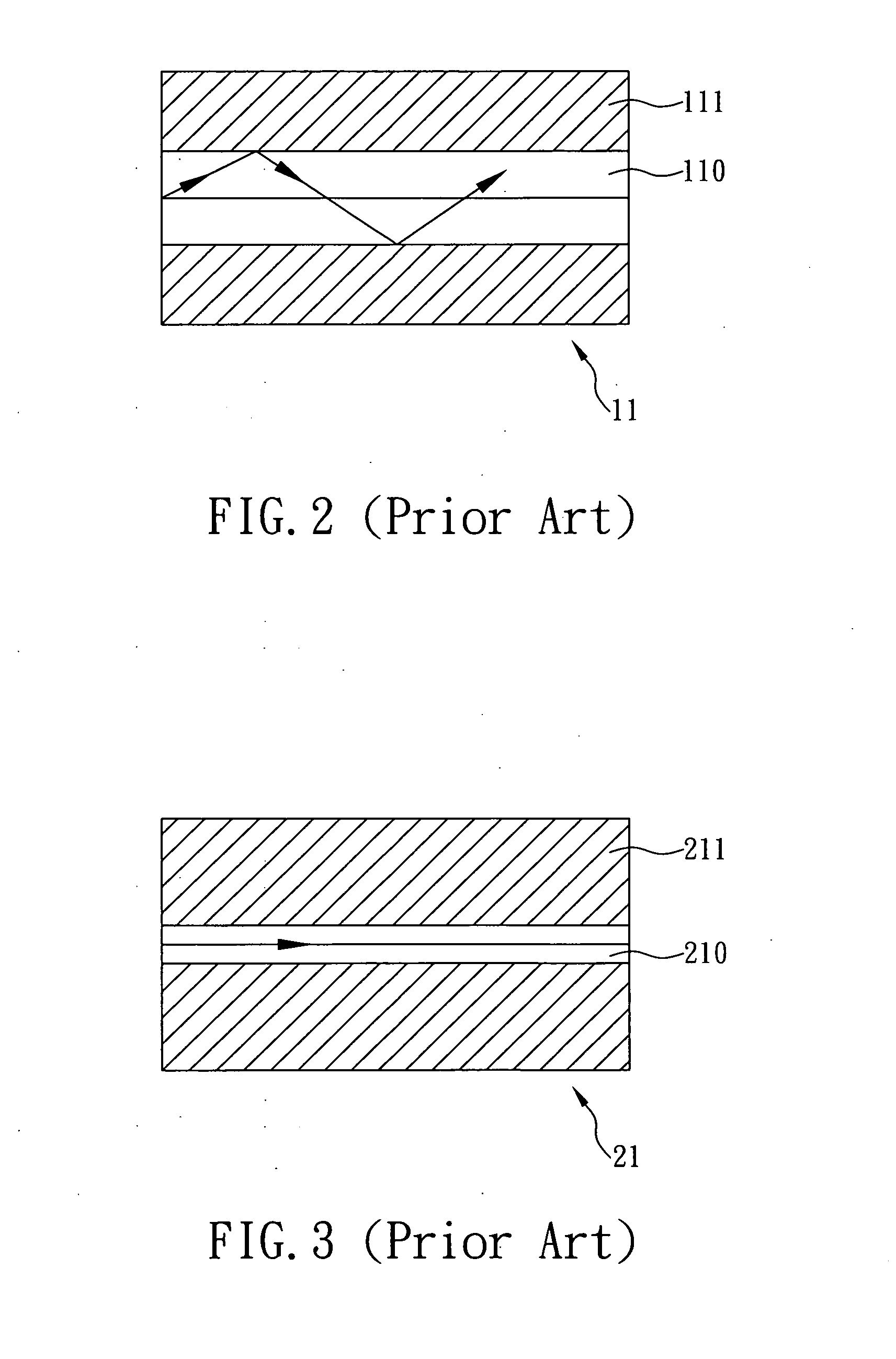Multi-diameter optical fiber link for transmitting unidirectional signals and eliminating signal deterioration
a multi-diameter, optical fiber technology, applied in the field of optical fiber links, can solve the problems of accumulating distortion, serious distortion of optical signals received by optical signal receiving chips, and detrimental to the quality of optical signal transmission, and achieve the effect of eliminating signal deterioration
- Summary
- Abstract
- Description
- Claims
- Application Information
AI Technical Summary
Benefits of technology
Problems solved by technology
Method used
Image
Examples
Embodiment Construction
[0031]Referring to FIG. 7, the present invention provides a multi-diameter optical fiber link 70 for transmitting unidirectional signals and eliminating signal deterioration, wherein the multi-diameter optical fiber link 70 includes a first cable 701 and a second cable 702. The first cable 701 encloses a first optical fiber 7011 therein. The first optical fiber 7011 has a first end surface for receiving optical signals and transmitting the received optical signals to a second end surface of the first optical fiber 7011. The first cable 701 has a second end which corresponds in position to the second end surface of the first optical fiber 7011 and which is peripherally and fixedly provided with a first adaptor 7012. The second cable 702 encloses a second optical fiber 7021 therein. The second optical fiber 7021 has a first end surface for receiving optical signals and transmitting the received optical signals to a second end surface of the second optical fiber 7021. The second cable ...
PUM
 Login to View More
Login to View More Abstract
Description
Claims
Application Information
 Login to View More
Login to View More - R&D
- Intellectual Property
- Life Sciences
- Materials
- Tech Scout
- Unparalleled Data Quality
- Higher Quality Content
- 60% Fewer Hallucinations
Browse by: Latest US Patents, China's latest patents, Technical Efficacy Thesaurus, Application Domain, Technology Topic, Popular Technical Reports.
© 2025 PatSnap. All rights reserved.Legal|Privacy policy|Modern Slavery Act Transparency Statement|Sitemap|About US| Contact US: help@patsnap.com



